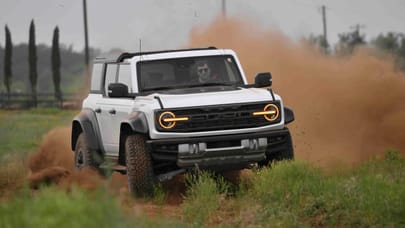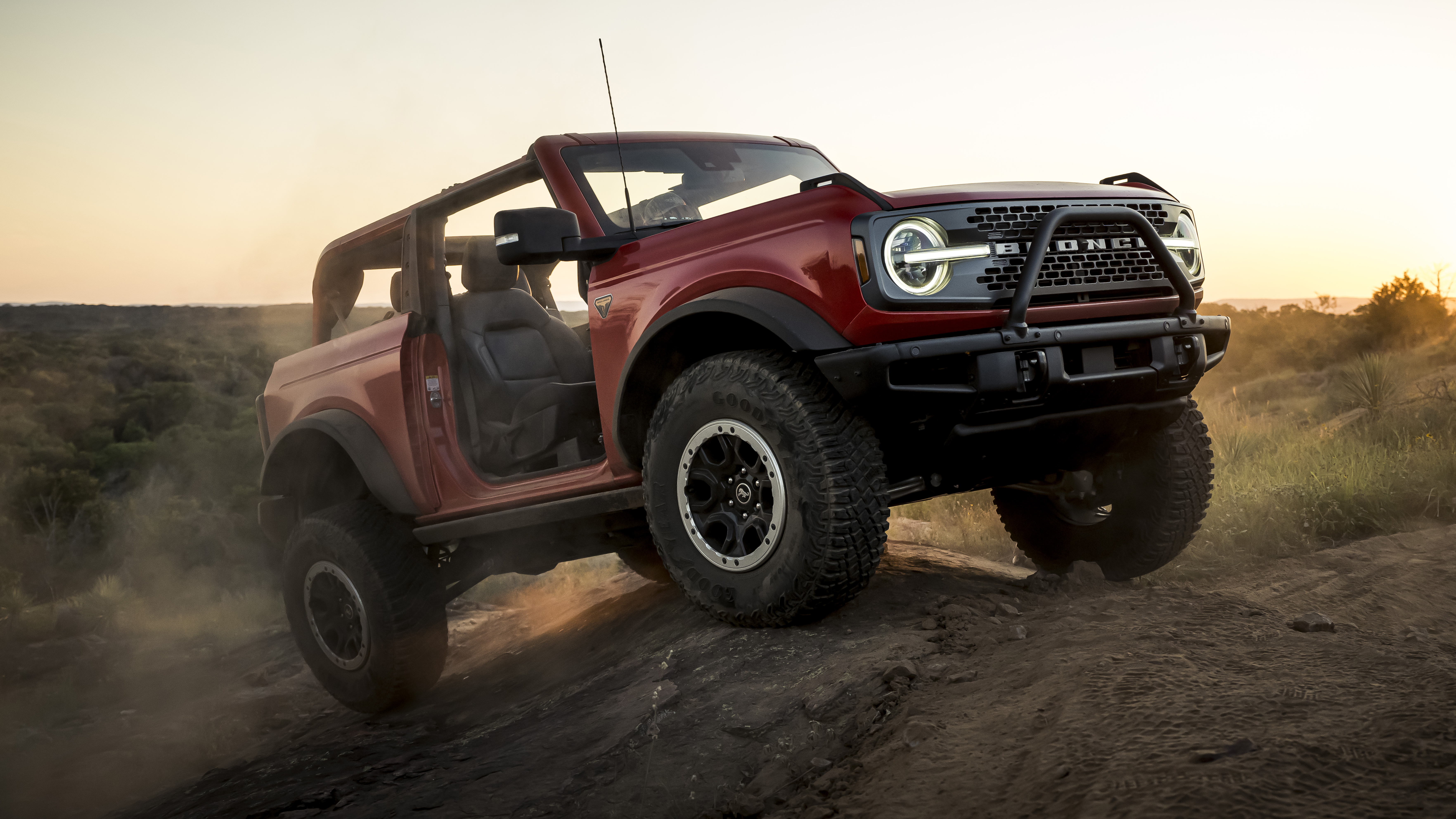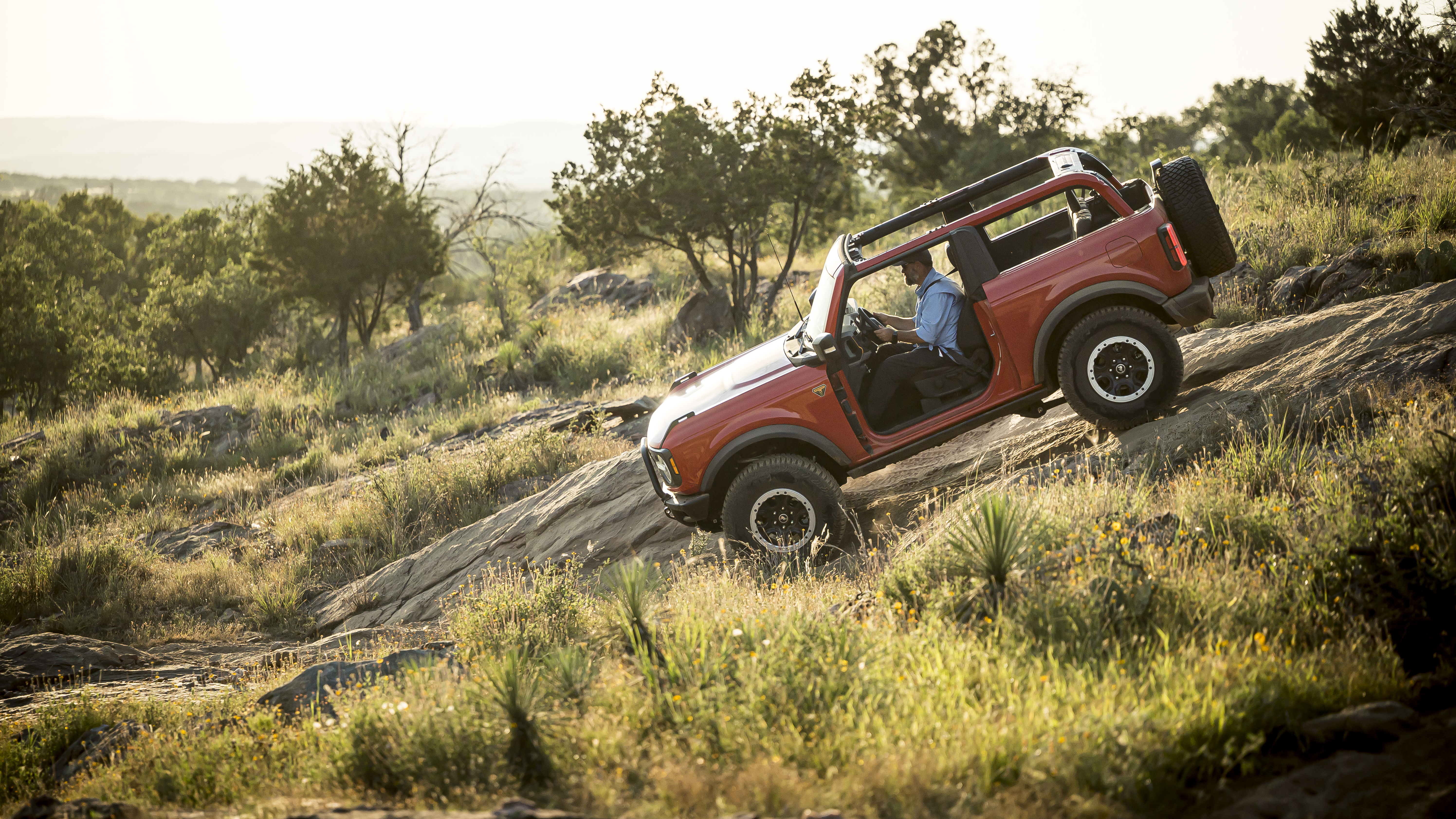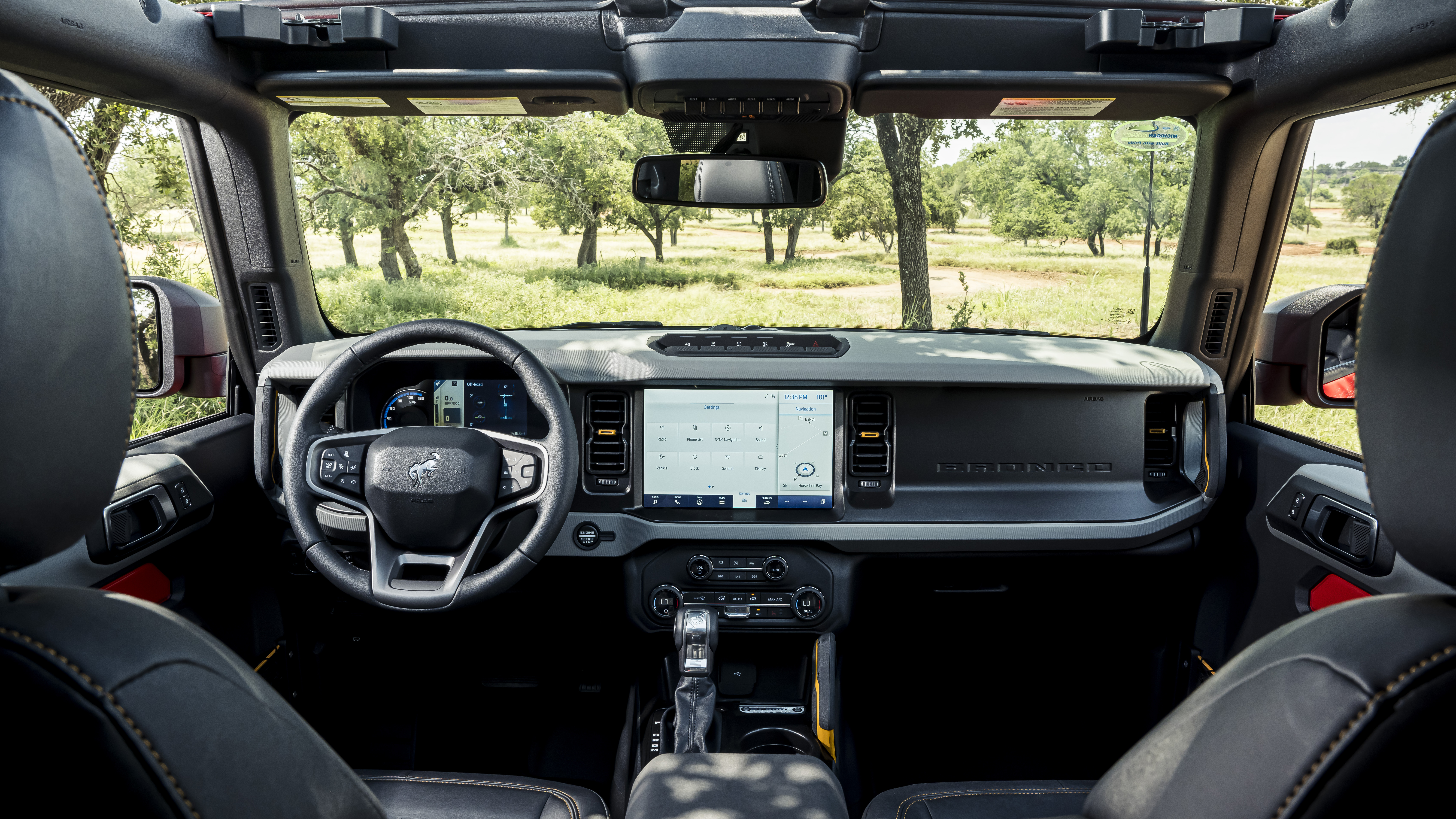
Ford Bronco review
Driving
What is it like to drive?
Come on, don’t pretend the Bronco is great around corners.
It isn’t. But it’s not bad either. The independent front suspension allows you to place the car and steer accurately without having to take second bites at the steering through corners, or make constant corrections at motorway speeds. It’s really not that wearing to do distance in. And we did do distance in the Bronco – over 1200 miles in two days (you’ll be reading more about that soon).
And that’s in a car equipped with the big tyres. Which, incidentally, roll more smoothly and quietly than you’d ever expect, and grip harder on tarmac too. They don’t even have too much squidge in them. The brakes had better power and bite than we expected and although it does roll, the top line Bilstein dampers manage that rather well, and there’s enough feel through steering and seat of your pants to give you information about the approaching limits.
But isn’t the ride a bit crude?
The solid axle at the back does have its drawbacks. It patters on most surfaces and big hits to the rear wheels are transmitted into the heavy back axle and that does in turn send slight shudders into the car. It helps that its coil sprung at the back, rather than the leaf springs you still get in many pick-ups. Unlike the Land Rover Defender, there’s no air suspension for the Bronco.
How fast is it?
That’s not really the point, although Ford does claim a 0-60mph time of 5.9secs for the 3dr Bronco equipped with the twin turbo V6. It’s a good engine to use, even though it doesn’t particularly like to rev. Decent mid-range, just loses its composure a bit if you do extend it. Also the throttle is a bit too sensitive at the top of its travel in Normal mode during general driving.
The bigger barrier to accessing the performance is the gearbox. The smaller engine can be had with a seven speed manual gearbox, but most Broncos will be fitted with the 10-speed auto from the Ranger. It’s fine as long as you don’t ask much of it, but quick kickdowns or seamless upshifts at speed are beyond it. And if you want to control it manually, the shifts, done by an awkward switch on the side of the gearlever, are heavily delayed. It’s much better behaving itself when crawling around off-road.
What about fuel economy?
Don’t expect great feats, since Ford doesn’t make great claims. The most efficient versions return about 23-24mpg on the US test cycle, the worst about 19-20mpg. We got 20.7mpg overall.
Tell me more about how it behaves in the rough.
There are seven modes in the Land Rover-esque mode dial: Normal, Eco, Slippery, Sand, Baja, Mud/Ruts and Rock Crawl. Just turn for the sort of driving you want and the car will do the rest. As well as the front and rear diff locks, there’s a low ratio gearbox and the chassis tricks mentioned earlier.
It’s logical to use and makes mincemeat of every surface we could find to test it on, from sand and gravel to chunky boulders, mud and steep slopes. Depending on the mode you’re in the car will ask if you want to engage low ratio, or diff locks, and can put camera views on the 12-inch centre screen – useful if you’re tipping over an edge and can’t see what’s in front of you.
Best of all, the Bronco, although heavy and high to get up into, isn’t actually that big (about 4.5 metres long) and has reasonable steering lock (albeit with a lot of turns between locks) so is surprisingly manoeuvrable. The Trail Turn system might be useful in some situations, but it’s fairly crude, just locking the inside rear wheel to act as a pivot, with the rest of the wheels skipping and jumping to turn the car around.
Variants We Have Tested

Trending this week
- Car Review
BMW 1 Series







